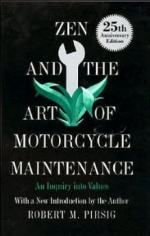
|
| Name: _________________________ | Period: ___________________ |
This test consists of 5 multiple choice questions, 5 short answer questions, and 10 short essay questions.
Multiple Choice Questions
1. A topsy-turvy feeling of inadequacy results when
(a) a new world is discovered by Columbus.
(b) instantaneous rates of change create hang-ups.
(c) occultism, mysticism, and mind-altering drug use are widespread.
(d) old forms of thought do not give people a way to deal with new experiences.
2. The Narrator feels apprehensive about
(a) introducing John and Sylvia to the DeWeeses.
(b) meeting the DeWeeses.
(c) riding through Yellowstone Park.
(d) spending the night in a cabin.
3. Herried is designated a Western town by the Narrator because
(a) the main gathering place is a saloon.
(b) the town is very dusty.
(c) the town only has one street.
(d) things are far apart in the town.
4. DeWeese had not like the "Church of Minorities" because
(a) it was not a very good painting.
(b) it was by an unknown artist.
(c) it was not abstract.
(d) it was a print of a painting.
5. Academic freedom was threatened by all EXCEPT
(a) There was a rule against failing students in classes.
(b) Professors were banned from speaking freely on campus.
(c) Accusations of stirring up trouble were leveled at professors.
(d) More stringent rules about acceptance to the college were enacted.
Short Answer Questions
1. The theoretic component of man's existence corresponds to all EXCEPT
2. What does the Narrator think he should be doing if he were a novelist instead of a Chautauqua orator?
3. The Narrator approaches maintaining his motorcycle like
4. The high meadow is welcome like
5. Who introduces the topic of ghost stories?
Short Essay Questions
1. Falling rock signals the aging and crumbling of the mountain. These small rockfalls serve as warnings. The Narrator, unlike Phaedrus, is able to heed warnings. How does the Narrator heed the warnings both physically and psychologically at this time?
2. Goethe's poem captures what may be at stake for the Narrator and Chris on this trip or at this point in their lives. Use the discussion of Chris, the ideas of Phaedrus up to this point, and what is said about the poem to explain how the poem captures what is going on in the Narrator's mind.
3. Explain the Narrator's train of knowledge. What do the various parts represent? What cannot be represented in a way you can see it in the train analogy?
4. Summarize how Poincaré's ideas fit closely to Phaedrus' ideas--like two sides of a jigsaw puzzle.
5. What was the Narrator attempting to accomplish when he ferried the backpacks and when he re-packed the backpacks? Do you think he accomplished what he attempted?
6. In chapter 13, the Narrator talks about Phaedrus' lecture about the "real university." What is a "real university" or a "real high school?" Start by explaining what a "real university" or a "real high school" is not. What is the primary goal of the "real university" or "real high school?"
7. All through chapter 18, Chris pushes himself to keep climbing and to do it at a fairly good rate even though this was his very first mountain climb or even hike into mountains. What was motivating him and why?
8. What is a priori knowledge and how are time and space examples of a priori knowledge?
9. What types of things are so dependent on Quality that they would be significantly changed or nonexistent if Quality did not exist?
10. What are the important points of skill in each part in the scientific methods process?
|
This section contains 1,970 words (approx. 7 pages at 300 words per page) |

|




